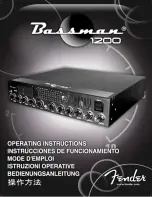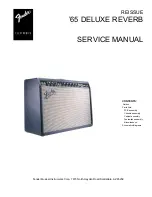
Wilson
®
Electronics, Inc.
Phone: 866-294-1660
www.wilsonelectronics.com
Fax: 435-656-2432
AIG SOHO 006 / 01.02.07
Amplifier Specifications
Dual Band
800/1900 MHz Specifications
Model Number
271245
Connectors
FME-Male
Impedance (input/output)
50 ohms
Dimensions
5.6 x 3.6 x 1.7 inch or 14.2 x 9.1 x 4.4 cm
Weight
1.44 lbs or 0.65 kg
Frequency
824-894 MHz / 1850-1990 MHz
1
Passband Gain (nominal)
800 MHz
50 dB
1900 MHz
60 dB
2
20 dB Bandwidth (nominal)
800 MHz (uplink/downlink)
53.5 MHz / 47.7 MHz
1900 MHz (uplink/downlink)
86 MHz / 83 MHz
3
Power output for single inside (uplink)
800 MHz
1900 MHz
CDMA
+30.9 dBm
+30.5 dBm
GSM
+30.0 dBm
+29.7 dBm
EDGE
+30.4 dBm
+30.3 dBm
AMPS
+30.2 dBm
4
Power output (uplink) for multiple
insides:
Number of
insides
Maximum Power
800 MHz
1900 MHz
2
+25.0 dBm
+24.7 dBm
3
+21.5 dBm
+21.2 dBm
4
+19.0 dBm
+18.7 dBm
5
+17.0 dBm
+16.7 dBm
6
+15.5 dBm
+15.2 dBm
Power output for single received channel
(downlink)
800 MHz
1900 MHz
CDMA
+10.0 dBm
+9.9 dBm
GSM
+11.0 dBm
+9.9 dBm
EDGE
+10.9 dBm
+9.6 dBm
AMPS
+10.3 dBm
4
Power output for multiple received
channels (downlink).
The maximum
power is reduced by the number of
channels:
Number of
channels
Maximum Power
800 MHz
1900 MHz
2
-11.6 dBm
-3.1 dBm
3
-15.1 dBm
-6.6 dBm
4
-17.6 dBm
-9.1 dBm
5
-19.6 dBm
-11.1 dBm
6
-21.1 dBm
-12.6 dBm
Noise Figure (typical)
3 dB nominal
Isolation (uplink/downlink)
> 90 dB
Power Requirements
6 V, .5 A - 1.5 A (depends upon uplink power)
Notes:
1. Nominal gain is the maximum gain at any frequency in the passband.
2. Nominal bandwidth is the difference between two frequencies that are adjacent to the passband where the amplification is 20 dB
lower than the passband amplification. One of the frequencies is lower than the passband and the other is higher.
3. The Manufacturer’s rated output power of this equipment is for single carrier operation. For situations when multiple carrier
signals are present, the rating would have to be reduced by 3.5 dB, especially where the output signal is re-radiated and can
cause interference to adjacent band users. This power reduction is to be by means of input power or gain reduction and not by
an attenuator at the output of the device.
4. The maximum power for 2 or more simultaneous signals will be reduced by 6 dB every time the number of signals is doubled.






























